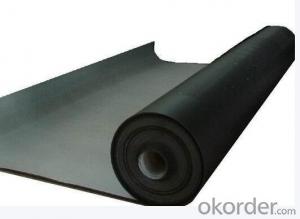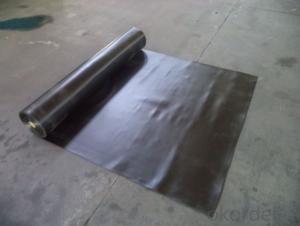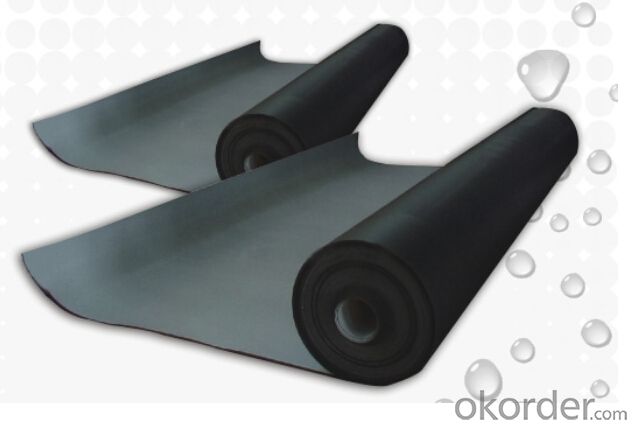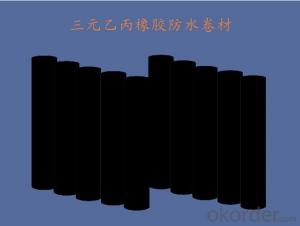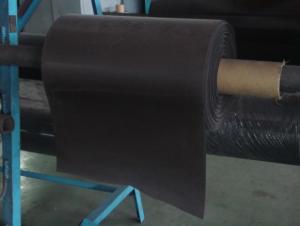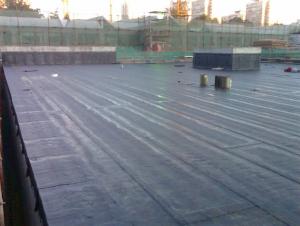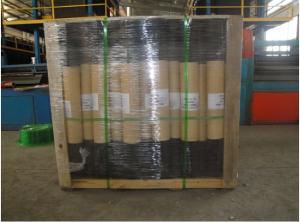EPDM Waterproofing Roof Membrane Best Price
- Loading Port:
- China Main Port
- Payment Terms:
- TT OR LC
- Min Order Qty:
- -
- Supply Capability:
- -
OKorder Service Pledge
OKorder Financial Service
You Might Also Like
EPDM waterproofing roofing membrane
Width: 1.2m
Length: 20m
Thickness: 1.2mm 1.5mm 2.0mm
1. Introduction:
2. Features:
Excellentphysical and mechanical performance
Hightearing resistance
Gooddeformation adaptability
High puncture resistance
Highaging resistance
UVresistance
3. Application:
Roofs, Basement, Toilets
Industrial and civil building waterproofing
Geosynthetic liner for swimming pool, channels, irrigation system
Especially suitable for projects with high requirements in durability, anti-corrosion and deformation
4. Specification:
Type | EPDM Waterproof Membrane | |||
Material | EPDM Rubber | |||
Thickness | 1.0mm | 1.2mm | 1.5mm | 2.0mm |
Size | 1.2m(width) * 20m(length)/roll | |||
Type | Vulcanized | |||
Pattern | Non-reinforced(homogeneous) | |||
Packing | 24sqm--80sqm/roll, with plastic bag | |||
Color | Black | |||
Application | Roofs, basement, pond, Lake, steel structure roof, swimming pool, underground, tunnel, etc | |||
5. Some photos:
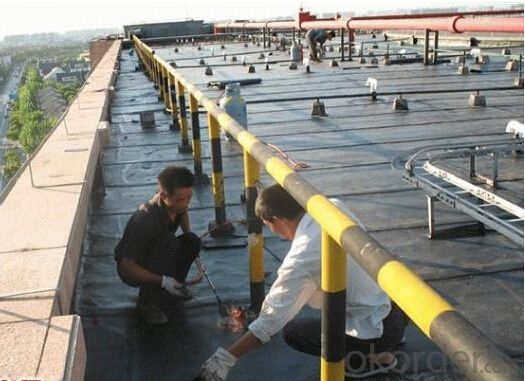
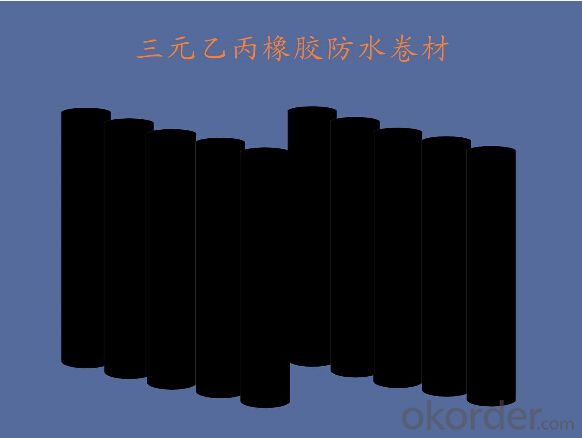
- Q: Can a waterproofing membrane be used for a planter roof?
- Yes, a waterproofing membrane can be used for a planter roof. Waterproofing membranes are designed to provide a protective barrier against water penetration, making them suitable for preventing water damage to the roof and underlying structures, including planter boxes.
- Q: Can a waterproofing membrane be used on hollow core block surfaces?
- Indeed, the utilization of a waterproofing membrane is possible on hollow core block surfaces. Waterproofing membranes are a widely employed measure to safeguard various surfaces against water infiltration and subsequent harm, encompassing surfaces composed of concrete and masonry. Hollow core block surfaces, being constructed from concrete, are not an exception to this practice. The application of a waterproofing membrane onto the exterior of hollow core blocks can effectively shield them from water intrusion and potential damage caused by moisture. This becomes particularly crucial in regions where exposure to water is frequent, such as basements or subterranean structures. However, it is of utmost importance to ensure that the specific waterproofing membrane chosen is compatible with hollow core block surfaces and that proper installation techniques are adhered to in order to attain optimal outcomes and long-lasting protection.
- Q: Can a waterproofing membrane be used on asphalt roofs?
- Yes, a waterproofing membrane can be used on asphalt roofs. In fact, it is a common practice to apply a waterproofing membrane on asphalt roofs to enhance their durability and protect them from water damage. The membrane is typically made of a synthetic material, such as modified bitumen or EPDM, which creates a barrier against water infiltration. This helps prevent leaks and extends the lifespan of the asphalt roof. Additionally, the waterproofing membrane can also provide added insulation and energy efficiency benefits to the building. However, it is important to ensure that the specific waterproofing membrane chosen is compatible with asphalt and meets the necessary industry standards for performance and durability. Consulting with a professional roofing contractor or manufacturer is recommended to determine the most suitable waterproofing membrane for asphalt roofs.
- Q: Can a waterproofing membrane be used for swimming pool decks?
- Swimming pool decks can benefit from the use of a waterproofing membrane. This special barrier acts as a shield, preventing water from penetrating the underlying structure. Its primary purpose is to ensure the durability and longevity of the deck, especially in areas where water exposure is frequent. To achieve a seamless and watertight seal, the membrane is typically applied over the concrete surface of the pool deck. By doing so, it effectively safeguards against water damage, such as cracking, spalling, or deterioration of the concrete. Moreover, it significantly reduces the risk of leaks or water seepage into the surrounding areas. In addition to its protective qualities, a waterproofing membrane can offer other advantages, including slip resistance, UV resistance, and protection against chemicals and stains. When choosing a waterproofing membrane for your swimming pool deck, it is crucial to select one that is specifically designed for this purpose. This ensures that it can withstand frequent exposure to water and other environmental factors.
- Q: Can waterproofing membranes be used on swimming pool decks?
- Yes, waterproofing membranes can be used on swimming pool decks. Waterproofing membranes are designed to create a barrier against water penetration, making them an ideal solution for areas that are constantly exposed to water, such as swimming pool decks. By applying a waterproofing membrane to the deck surface, it helps to prevent any water from seeping through and causing damage to the underlying structure. Additionally, waterproofing membranes can also provide protection against chemicals, UV rays, and general wear and tear, which are common in swimming pool environments. Overall, using waterproofing membranes on swimming pool decks can help extend their lifespan, reduce maintenance costs, and enhance the overall safety and appearance of the area.
- Q: Can a waterproofing membrane be used on precast insulation surfaces?
- Indeed, precast insulation surfaces can make use of a waterproofing membrane. The primary purpose of this membrane is to create a safeguard against water infiltration, and it can be applied to diverse surfaces, such as precast insulation. In effect, the membrane serves to thwart water from penetrating the insulation, thereby averting potential harm and preserving its efficacy. By employing a waterproofing membrane on precast insulation surfaces, one can guarantee that the insulation stays dry and preserves its thermal properties for the long term.
- Q: How long do waterproofing membranes typically last?
- The typical lifespan of waterproofing membranes ranges from 20 to 30 years, with various factors influencing their durability. These factors include the membrane's quality, installation method, and maintenance practices. Membranes of higher quality and those installed and maintained properly can last closer to 30 years. Conversely, lower-quality membranes or those exposed to harsh conditions may have a shorter lifespan. Regular inspections and prompt repairs can also contribute to extending the longevity of waterproofing membranes. It is crucial to recognize that these estimates are general and the actual lifespan may differ based on specific circumstances and conditions of membrane usage.
- Q: Can waterproofing membranes be used on concrete stairs?
- Yes, waterproofing membranes can be used on concrete stairs. These membranes are designed to create a protective barrier against water penetration, which is particularly important for areas exposed to moisture such as outdoor or basement stairs. Applying a waterproofing membrane on concrete stairs can help prevent water damage, increase their durability, and extend their lifespan.
- Q: Can a waterproofing membrane be used for pond or pool applications?
- Certainly! A waterproofing membrane is suitable for both pond and pool applications. Its main purpose is to create a barrier that prevents water from penetrating, making it an excellent choice for sealing ponds and pools. These membranes are typically made from synthetic materials like PVC, EPDM, or TPO, all of which have high resistance to water and UV rays. They come in different thicknesses and can be tailored to fit the specific dimensions of the pond or pool. Moreover, waterproofing membranes are incredibly durable and flexible, allowing them to withstand continuous exposure to water and the movement of the underlying substrate. In summary, utilizing a waterproofing membrane for pond or pool applications helps avoid leaks, extends the lifespan of the structure, and guarantees a safe and enjoyable water environment.
- Q: Can a waterproofing membrane be used on tunnels?
- Yes, a waterproofing membrane can be used on tunnels. Tunnels are often subjected to high levels of moisture, groundwater infiltration, and potential leaks. Therefore, it is crucial to protect them from water damage and ensure their long-term structural integrity. Waterproofing membranes are commonly used in tunnel construction to prevent water penetration and provide an effective barrier against moisture. These membranes are designed to be durable, flexible, and resistant to various environmental conditions, making them suitable for use in tunnels. They can be applied to the tunnel walls, roof, and floor to create a waterproof seal, ensuring that the tunnel remains dry and protected from water-related issues such as corrosion, deterioration, and mold growth. Additionally, waterproofing membranes can also help in reducing maintenance costs and extending the lifespan of the tunnel infrastructure.
Send your message to us
EPDM Waterproofing Roof Membrane Best Price
- Loading Port:
- China Main Port
- Payment Terms:
- TT OR LC
- Min Order Qty:
- -
- Supply Capability:
- -
OKorder Service Pledge
OKorder Financial Service
Similar products
Hot products
Hot Searches
Related keywords

